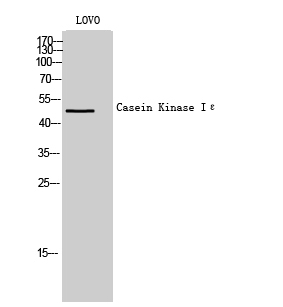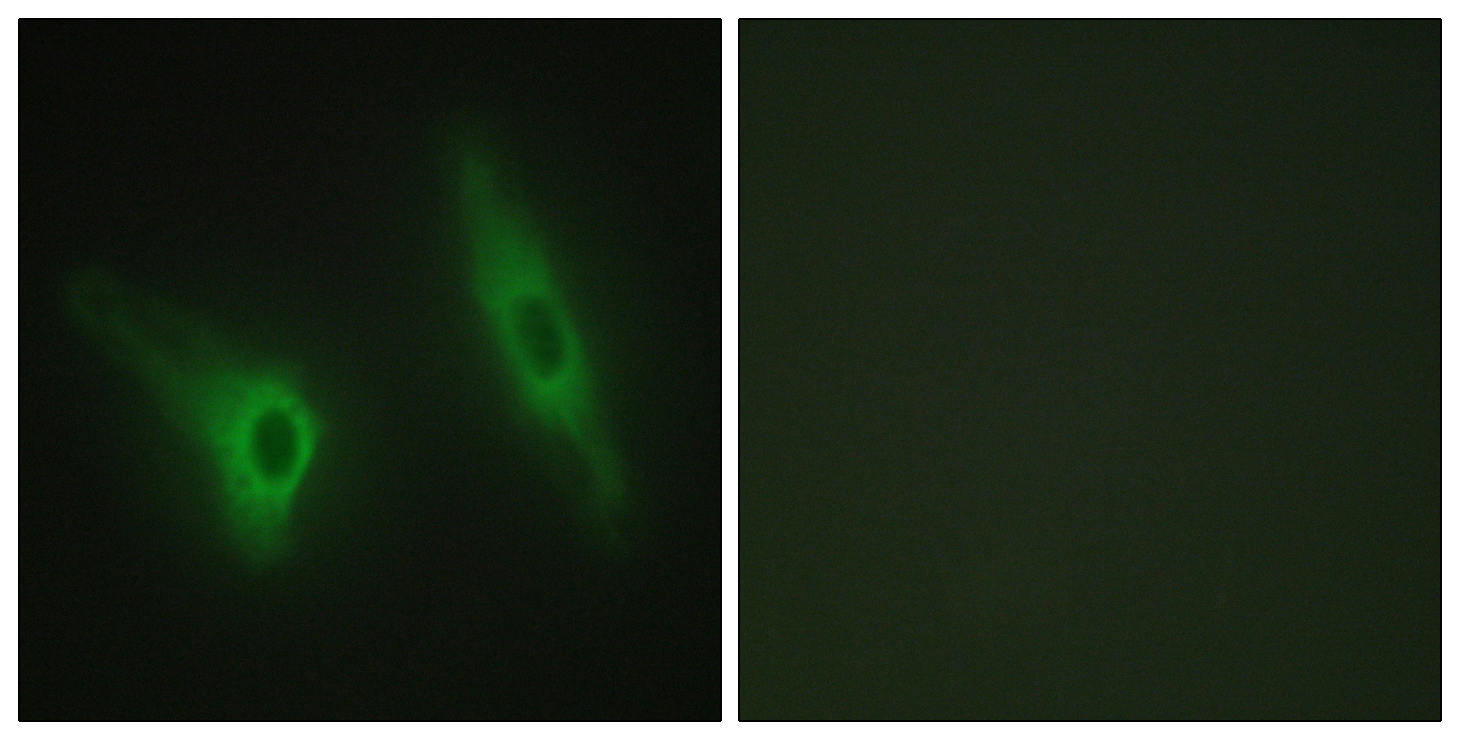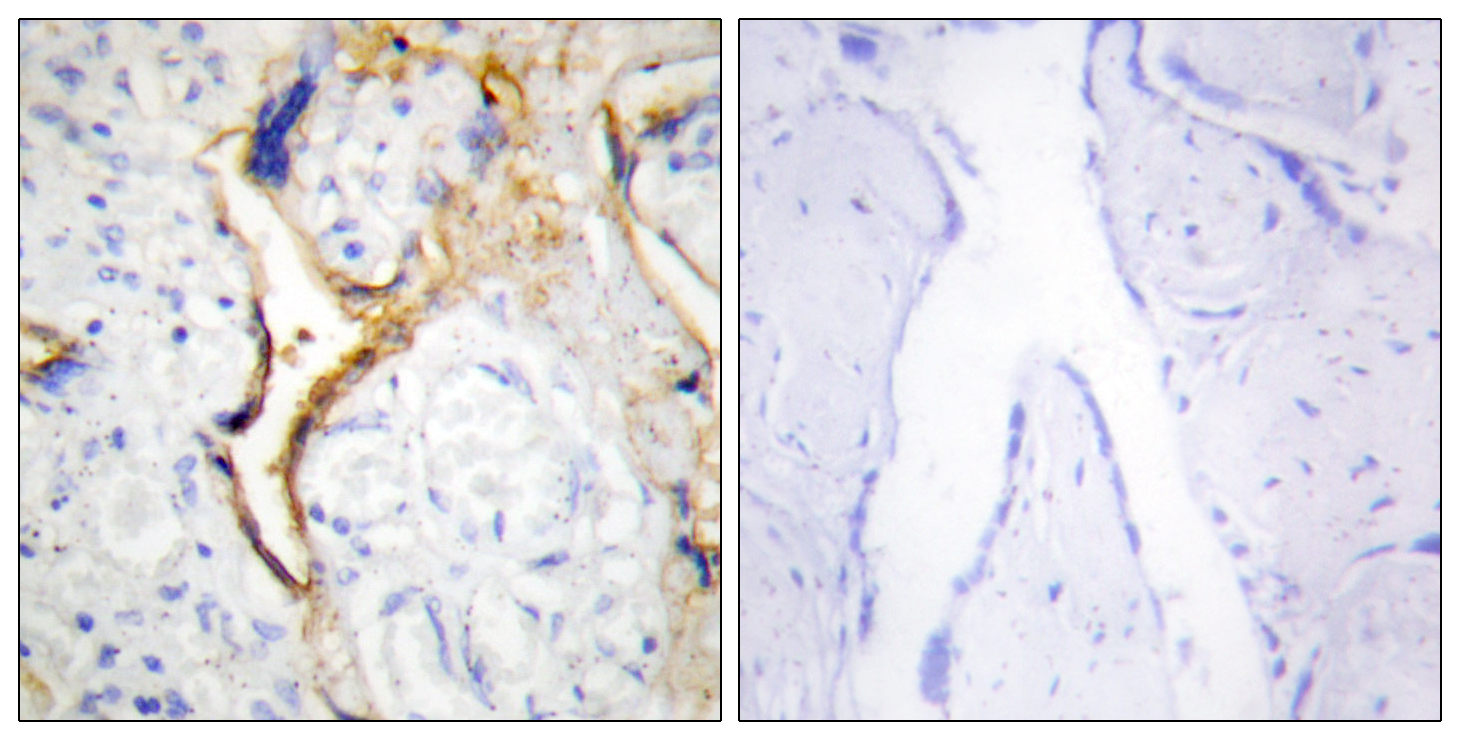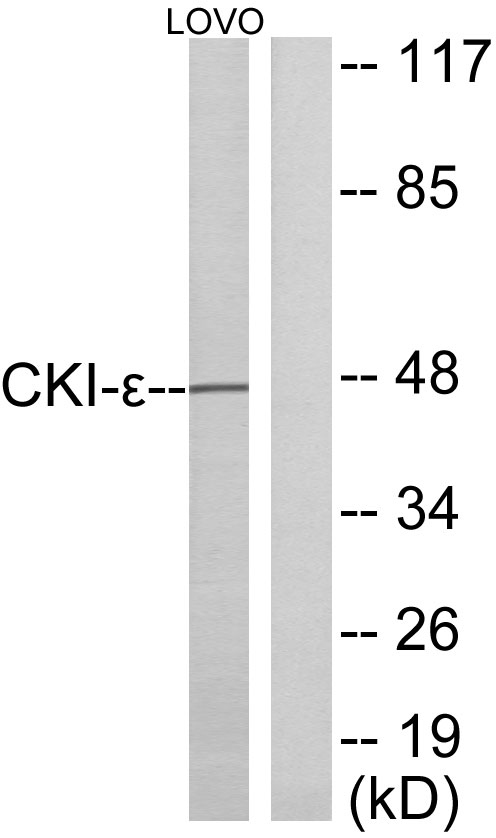Casein Kinase Iε Polyclonal Antibody
- Catalog No.:YT0651
- Applications:WB;IHC;IF;ELISA
- Reactivity:Human;Mouse
- Target:
- Casein Kinase Iε
- Fields:
- >>FoxO signaling pathway;>>Wnt signaling pathway;>>Hedgehog signaling pathway;>>Hippo signaling pathway;>>Hippo signaling pathway - multiple species;>>Circadian rhythm;>>Alzheimer disease;>>Pathways of neurodegeneration - multiple diseases
- Gene Name:
- CSNK1E
- Protein Name:
- Casein kinase I isoform epsilon
- Human Gene Id:
- 1454
- Human Swiss Prot No:
- P49674
- Mouse Gene Id:
- 27373
- Mouse Swiss Prot No:
- Q9JMK2
- Immunogen:
- The antiserum was produced against synthesized peptide derived from human CKI-epsilon. AA range:276-325
- Specificity:
- Casein Kinase Iε Polyclonal Antibody detects endogenous levels of Casein Kinase Iε protein.
- Formulation:
- Liquid in PBS containing 50% glycerol, 0.5% BSA and 0.02% sodium azide.
- Source:
- Polyclonal, Rabbit,IgG
- Dilution:
- WB 1:500 - 1:2000. IHC 1:100 - 1:300. IF 1:200 - 1:1000. ELISA: 1:20000. Not yet tested in other applications.
- Purification:
- The antibody was affinity-purified from rabbit antiserum by affinity-chromatography using epitope-specific immunogen.
- Concentration:
- 1 mg/ml
- Storage Stability:
- -15°C to -25°C/1 year(Do not lower than -25°C)
- Other Name:
- CSNK1E;Casein kinase I isoform epsilon;CKI-epsilon;CKIe
- Observed Band(KD):
- 47kD
- Background:
- casein kinase 1 epsilon(CSNK1E) Homo sapiens The protein encoded by this gene is a serine/threonine protein kinase and a member of the casein kinase I protein family, whose members have been implicated in the control of cytoplasmic and nuclear processes, including DNA replication and repair. The encoded protein is found in the cytoplasm as a monomer and can phosphorylate a variety of proteins, including itself. This protein has been shown to phosphorylate period, a circadian rhythm protein. Two transcript variants encoding the same protein have been found for this gene. [provided by RefSeq, Feb 2014],
- Function:
- catalytic activity:ATP + a protein = ADP + a phosphoprotein.,function:Casein kinases are operationally defined by their preferential utilization of acidic proteins such as caseins as substrates. Can phosphorylate a large number of proteins. Participates in Wnt signaling. Phosphorylates DVL1. Central component of the circadian clock. May act as a negative regulator of circadian rhythmicity by phosphorylating PER1 and PER2. Retains PER1 in the cytoplasm. Inhibits cytokine-induced granuloytic differentiation.,induction:Down-regulated during granulocytic differentiation.,PTM:Autophosphorylated.,similarity:Belongs to the protein kinase superfamily.,similarity:Belongs to the protein kinase superfamily. CK1 Ser/Thr protein kinase family. Casein kinase I subfamily.,similarity:Contains 1 protein kinase domain.,subunit:Monomer. Component of the circadian core oscillator, which includes the CRY pro
- Subcellular Location:
- Cytoplasm . Nucleus .
- Expression:
- Expressed in all tissues examined, including brain, heart, lung, liver, pancreas, kidney, placenta and skeletal muscle. Expressed in monocytes and lymphocytes but not in granulocytes.
- June 19-2018
- WESTERN IMMUNOBLOTTING PROTOCOL
- June 19-2018
- IMMUNOHISTOCHEMISTRY-PARAFFIN PROTOCOL
- June 19-2018
- IMMUNOFLUORESCENCE PROTOCOL
- September 08-2020
- FLOW-CYTOMEYRT-PROTOCOL
- May 20-2022
- Cell-Based ELISA│解您多样本WB检测之困扰
- July 13-2018
- CELL-BASED-ELISA-PROTOCOL-FOR-ACETYL-PROTEIN
- July 13-2018
- CELL-BASED-ELISA-PROTOCOL-FOR-PHOSPHO-PROTEIN
- July 13-2018
- Antibody-FAQs
- Products Images

- Western Blot analysis of LOVO cells using Casein Kinase Iε Polyclonal Antibody

- Immunofluorescence analysis of HeLa cells, using CKI-epsilon Antibody. The picture on the right is blocked with the synthesized peptide.

- Immunohistochemistry analysis of paraffin-embedded human placenta tissue, using CKI-epsilon Antibody. The picture on the right is blocked with the synthesized peptide.

- Western blot analysis of lysates from LOVO cells, using CKI-epsilon Antibody. The lane on the right is blocked with the synthesized peptide.



